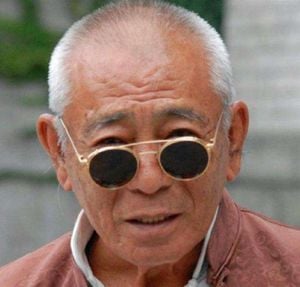On the evening of March 23, 2025, critical negotiations between the United States and Ukraine are set to take place in Saudi Arabia. These discussions loom just one day before a separate meeting scheduled between U.S. and Russian representatives, highlighting the increasingly complex geopolitical landscape surrounding the ongoing conflict in Ukraine.
According to a report from The New York Times, the upcoming talks aim to address a proposed 30-day ceasefire concerning energy facilities, a plan that both Russia and Ukraine tentatively agreed to following a series of phone calls between U.S. President Donald Trump and his Russian counterpart Vladimir Putin on March 18 and 19.
Security of marine traffic in the Black Sea is another vital topic on the agenda for the U.S. and Ukrainian delegations during these negotiations. Special envoy Keith Kellogg emphasized that these talks mark a rare occasion for indirect discussions between Moscow and Kiev, indicating that representatives from both sides will be placed in separate rooms while U.S. officials clarify the demands from both parties.
Interestingly, the Ukrainian side reportedly views the negotiations as a 'purely technical' affair. Georgy Tikhoy, a representative from Ukraine's Foreign Ministry, stated, "We intend to clarify the conditions, nuances of possible different ceasefire regimes, how to monitor them, and what enters into their scope of activity.”
The urgency of these negotiations is underpinned by the upcoming meeting in Riyadh on March 24 between U.S. and Russian officials. This assembly marks the third instance of talks between the two nations this year, forming a crucial point in U.S.-Russian relations. Dmitry Peskov, press secretary for President Putin, revealed that the Russian delegation has been carefully selected by the president himself, comprising Senator Georgy Karasin and adviser to the FSB Director, Sergei Beseda.
One of the pivotal discussions expected during the U.S.-Russia meeting will center on the potential re-establishment of the Black Sea grain initiative, originally brokered in July 2022. This initiative facilitated the export of grain from Ukrainian ports, but it was suspended by Russia in July 2023. Analysts speculate that a renewed effort to resolve this matter could further stabilize not just the regional economy but also the lives of many affected by the ongoing conflict.
Past interactions between the leaders of the U.S. and Russia shed light on current tensions. Just a day prior to the negotiations, records show that Presidents Trump and Putin discussed ceasing attacks on Ukraine's energy infrastructure for 30 days, a move seen as a step towards peace. However, the reality on the ground has been complicated.
On March 19, the Russian Ministry of Defense reported that it accidentally shot down its own drones en route to strike energy facilities in Ukraine's Nikolaev region shortly after receiving Putin’s orders for a temporary halt. This incident underscores the precarious nature of military operations amid ongoing dialogues.
Even after significant attacks, such as a strike on an oil depot associated with the Caspian Pipeline Consortium, Russia maintained its stance of upholding the ceasefire initiative. Dmitry Peskov confirmed to reporters that the Kremlin would not reconsider the order to stop strikes on Ukrainian energy facilities.
While Ukrainian President Vladimir Zelensky has publicly expressed support for the proposed ceasefire, he has not issued an identical directive as Putin. Official communication linkages remain strained, reflecting the precarious balance of power.
Reports indicate that the Ukrainian energy infrastructure has suffered severe damage, with estimates suggesting that as much as 80% of thermal generation capacity has been lost in previous strikes. Ukrainian Prime Minister Denis Shmygal confirmed the damage to 62 energy blocks, and in May 2024, the electric company DTEK reported that 80% of thermal generating capacity had been destroyed.
However, some experts claim that Ukrainian assessments of damage may be exaggerated to secure additional international aid and military support. Igor Yushkov from the Financial University under the Russian government noted discrepancies in declared destruction levels, suggesting some energy infrastructure could have been operational or restored after initial strikes.
In recent months, the deteriorating condition of energy networks has emerged as a critical concern for Ukrainian authorities. With nuclear power providing 55% of the country's energy since the loss of significant installations, Kiev has cautiously avoided aggression against nuclear sites due to the potential for catastrophic incidents.
Pursuing a moratorium on strikes, particularly targeting nuclear facilities, could stabilize the situation further. Discussions regarding this issue were also raised earlier in January 2025, reflecting a growing recognition of the necessity to protect sensitive energy infrastructures.
Economic analysts are carefully weighing the implications of potential agreements. A ceasefire could significantly reduce recovery costs for Russia's energy sectors, especially given Ukraine’s dependency on foreign financing for restoration efforts.
As both sides prepare to engage in these crucial discussions, the stakes for the future of the conflict remain extraordinarily high. Each party's willingness to compromise on issues of energy security may hold the key to immediate relief for those afflicted by ongoing hostilities.
The outcomes of the planned negotiations in Saudi Arabia will be closely monitored as they could dictate the trajectory of the region for the months to come. In this ever-evolving conflict, as both countries look to navigate an increasingly complex landscape, the final outcome hangs in a delicate balance.




